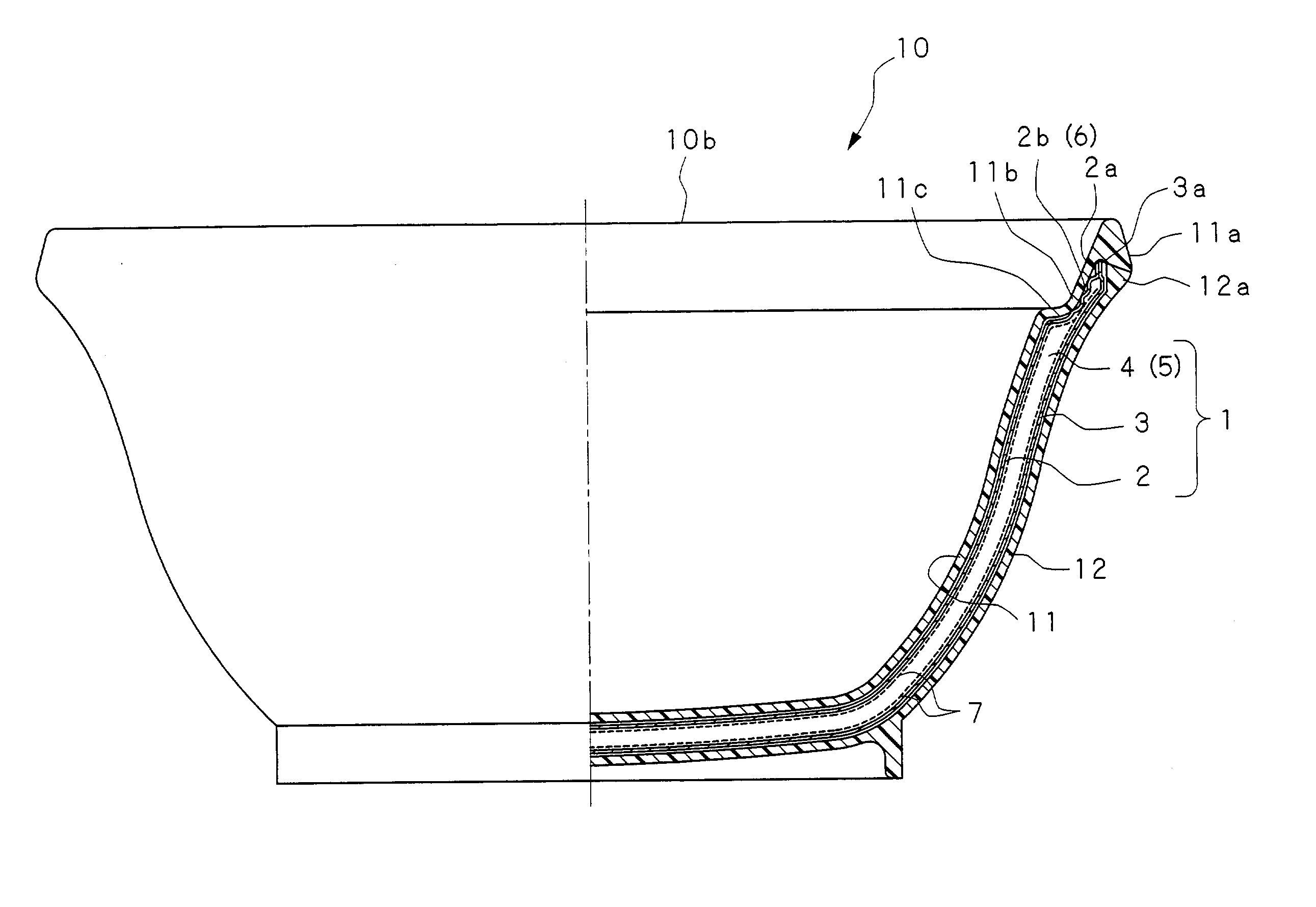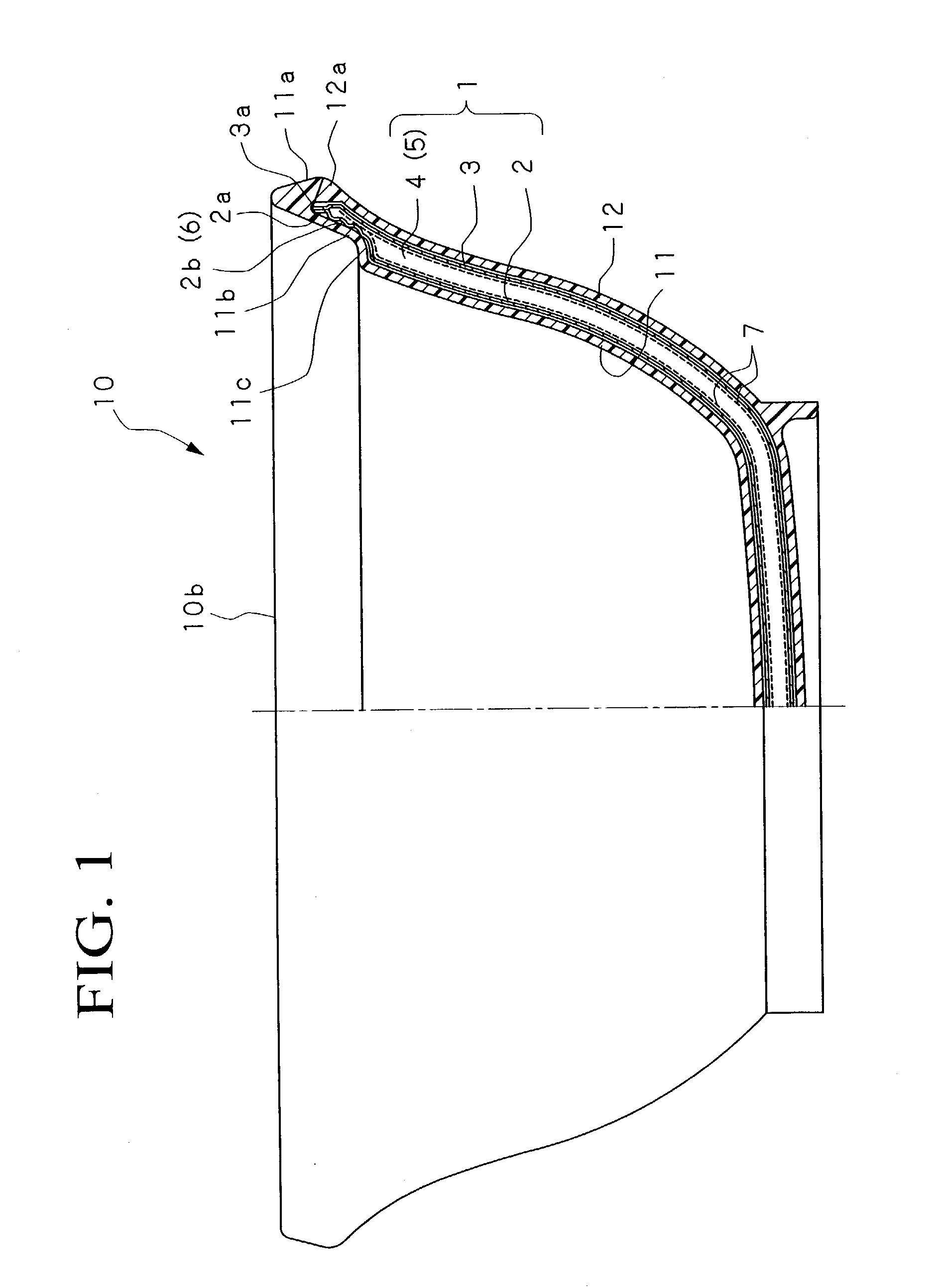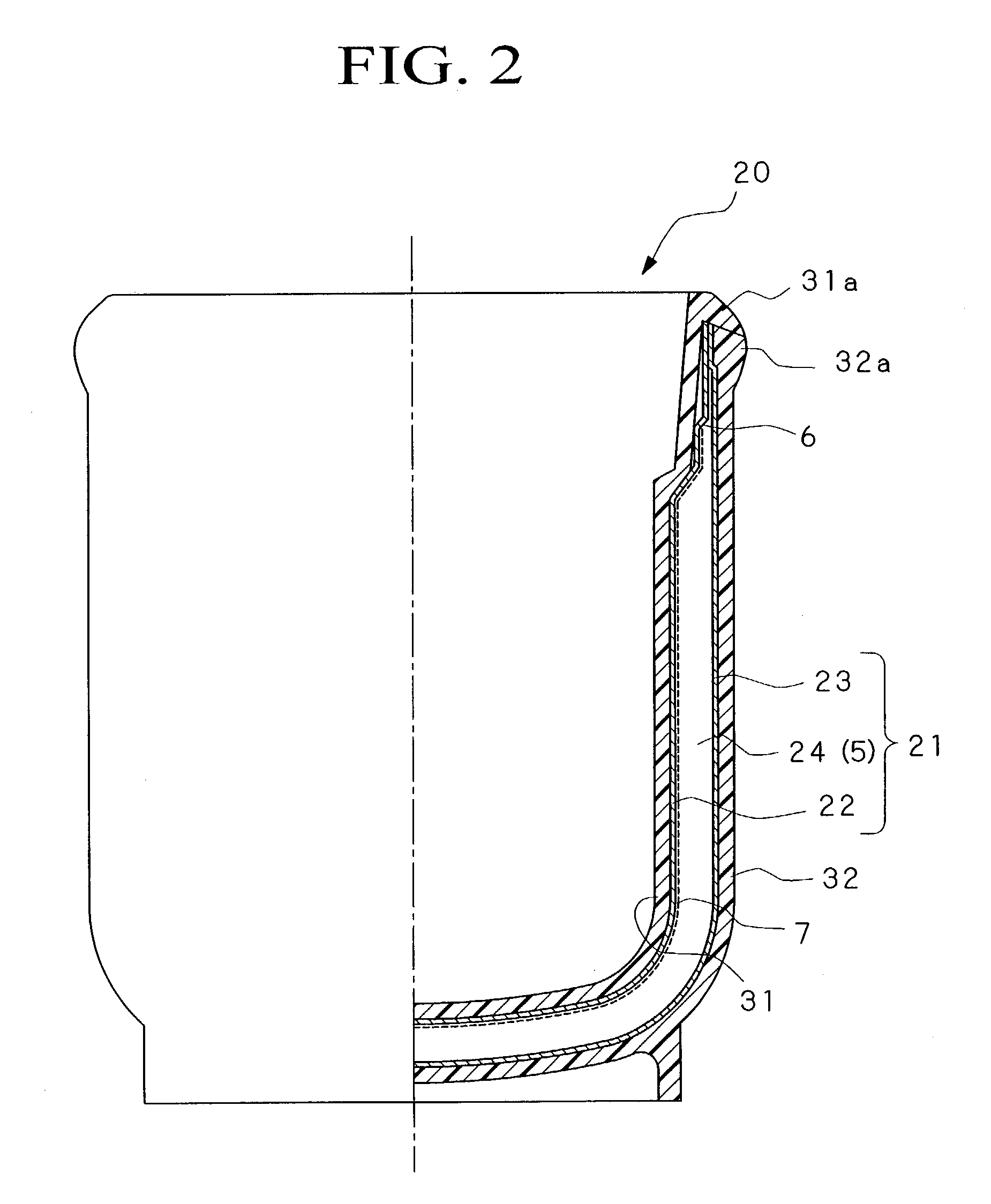Heat insulating container
a technology of heat insulation container and heat insulation container, which is applied in the direction of domestic cooling apparatus, transportation and packaging, lighting and heating apparatus, etc., can solve the problems of deformation of heat insulation containers, unusable heat insulation containers, and deformation of inner and outer containers, and achieve excellent heat insulation performance and available volumetric space efficiency, so as to facilitate the washing process using a washing bath
- Summary
- Abstract
- Description
- Claims
- Application Information
AI Technical Summary
Benefits of technology
Problems solved by technology
Method used
Image
Examples
example 2
[0066] Next, the buoyancy of the heat insulating container of the present invention shown in FIG. 1 was confirmed by constructing three kinds of heat insulating containers (B), (C), and (D) whose size was varied as follows. Note that stainless steel SUS 304 was used for the inner wall member 2 and the outer wall member 3, and ABS (SR-H-35, a product of Denki Kagaku Kogyo K. K.) was used as a synthetic resin for the inside container part 11 and the outside container part 12. Also, copper foil was used for the radiation preventing layer 7.
[0067] Heat Insulating Container (B)
6 inner diameter of inner wall member 2: ca. 121.0 mm, thickness 0.3 mm outer diameter of outer wall member 3: ca. 136.0 mm, thickness 0.3 mm inner diameter of inside container ca. 119.4 mm, thickness 1.5 mm part 11: outer diameter of outside container ca. 142.0 mm, thickness 1.5 mm part 12: width of space portion 4 of heat 4.0 mm (inner size) insulating layer body 1: depth of inside container part 11: ca. 63 mm to...
example 3
[0073] Also, as Example 3, an inner wall member 22 and an outer wall member 23 of a cup shape, which are made of a metal, such as stainless steel, were integrated with a space portion 24 therebetween as shown in FIG. 2, and the space portion 24 was evacuated to form an evacuated space 5 to produce a heat insulating layer body 21 of a cup shape. An inside container part 31 and an outside container part 32 made of a synthetic resin were placed so as to surround the heat insulating layer body 21. For this heat insulating container, the specifications of the inner wall member 22 and the outer wall member made of a metal were varied to produce three kinds of heat insulating containers (E), (F), and (G) using the same method, and the change in buoyancy thereof was confirmed.
[0074] Note that the inner wall member 22 and the outer wall member 23 were formed using SUS 304, and the inside container part 31 and the outside container part 32 were formed using polycarbonate (panlight L-1225T, a ...
example 4
[0082] Next, as a heat insulating container according to Example 4 of the invention, a heat insulating and retaining storage container 100 as shown in FIG. 3, which is suitable for holding and carrying food which is contained in non-insulated general tableware V, was manufactured using an insertion molding method. Note that in FIG. 3, elements which are the same as those in FIG. 1 are indicated using the same numerals, and the explanation thereof will be omitted.
[0083] The heat insulating and retaining storage container 100 includes a storage container part 40 having an upper opening portion, in which the container V, such as tableware, is placed, and a cover member 50 which covers an opening portion 40a.
[0084] The storage container part 40 includes an inner wall member 42 in a container shape, which is made of a metal, such as stainless steel, and an outer wall member 43 in a container shape, which has a similar shape to the inner wall member 42 but somewhat larger, and they are di...
PUM
 Login to View More
Login to View More Abstract
Description
Claims
Application Information
 Login to View More
Login to View More - R&D
- Intellectual Property
- Life Sciences
- Materials
- Tech Scout
- Unparalleled Data Quality
- Higher Quality Content
- 60% Fewer Hallucinations
Browse by: Latest US Patents, China's latest patents, Technical Efficacy Thesaurus, Application Domain, Technology Topic, Popular Technical Reports.
© 2025 PatSnap. All rights reserved.Legal|Privacy policy|Modern Slavery Act Transparency Statement|Sitemap|About US| Contact US: help@patsnap.com



